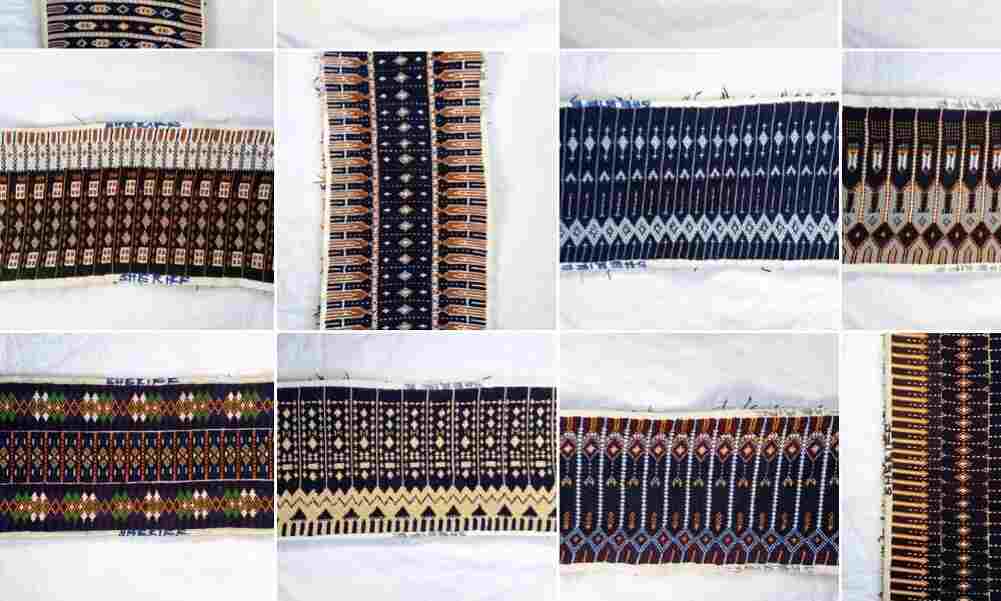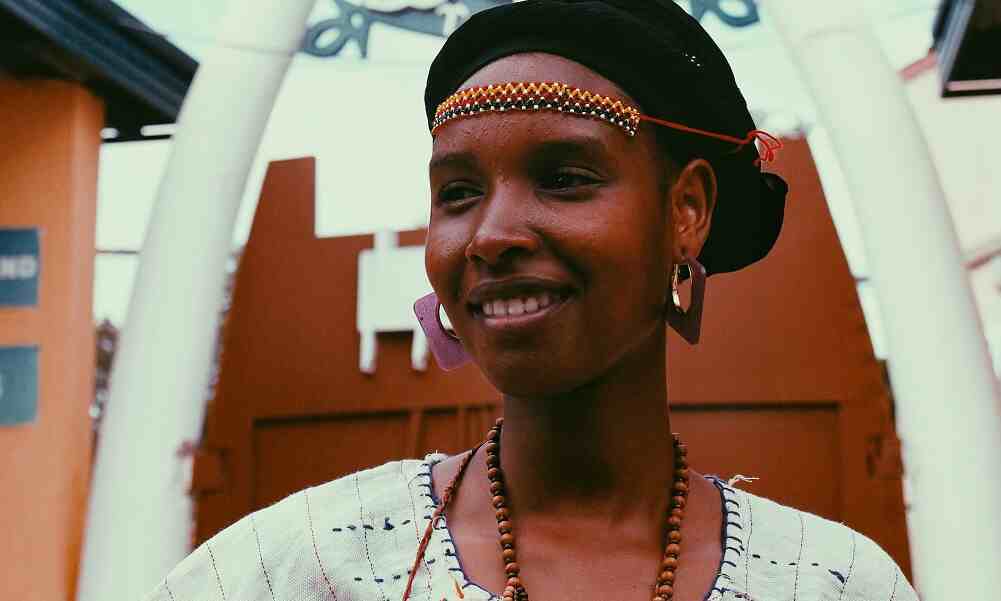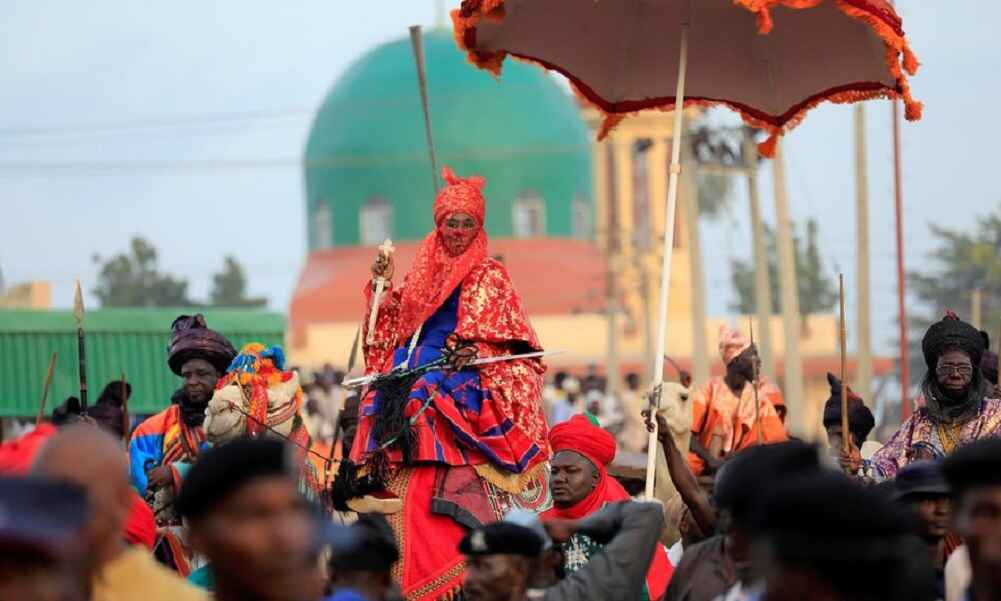Kube cap is amongst the several fashions adopted by northern Nigerians. This costume serves several functions, from protecting the wearer from the scorching sun to a display of wealth and affluence. Kube caps are among the most crucial regalia for men to beautify themselves and stand out amongst their peers due to their variety of colours and mixture of uniquely embroidered designs.
These caps play an essential role in society as maturity and responsibility are well ascribed to the wearers of the cap.
History of Kube caps
To date, no data shows the specific period when the Kube cap came to being, but it is said that the concept of the Kube caps evolved. It is believed that what we know today as Kube came from the Kanuri people of present-day Borno state. The tradition of the Kanuri people wearing long bulky garments with caps has taken a different form due to their association with several other practices over time.
The history of the Kanuri people is traced back to the El-kanemi empire of Borno, and the empire is said to be traced to Sudan and eventually to Islamic Arabia. It is a well-documented history of the Arabs and their affiliation to caps, so it is said to be how caps came to be in Nigeria, with Bama – Borno state as the Kube cap central.
In the early days, an individual is seen to be unruly and wayward should they not be seen with their caps on, to the extent that one’s marriage proposal could be rejected, as such a person doesn’t dress responsibly. It becomes a thing of mockery to dress without a cap on.
During that time, enslaved people and servants of the Shehu of Borno and other Emirates weren’t allowed to put on caps as their social standing wasn’t like others, and in recent times, only when they came close to the Shehu were they to remove the caps.
How Kube Cap is Made
Because of the multilayered nature of the Kube cap, it takes an average of two weeks to be completed. A lot of creativity is applied during the making of the caps, as it requires a seamless symmetry and superb colour combination to stand out. Each cap begins with a design pattern mark-off, usually sketched by hand, which is the most complex and technical part of the job, using a ruler and coloured markers.

Before any other thing, using a pen and a ruler, one must initially conceptualize the cap one has in mind to weave on the bakta. This eventually depicts the accuracy in the patterns, strikes, and lines. “The art of design is a specialty of its own. With these, the embroidery works on the bakta is carried out.”
The size of the bakta determines the size the cap would be, whether it be short, tall, big, or small; furthermore, the standard of the thread and level of expertise would determine the quality and beauty of the cap to be made. The sewing of the cap’s base starts as soon as the intended pattern is gotten. The white centerpiece on the top goes on last. Concerning the number of layers in the design, a cap-making process can take about two to five weeks to sew.
In yesteryears, the cap-making process used to be done by hand nowadays; however, there are computer-based designs in which a machine does almost the entire process. However, these types of caps are not very much patronized as those solely done with hands.
Types of Kube Caps
There are different types of Kube caps; including Zanna, Bangwal, Bama and Tangaran, with Tangaran cap being the grandest and most expensive of all.
Kube caps are named after notable people who wor them such as; Zanna Bukar (First Republic Minister), Ex-Head of State Abacha, Muhammadu Buhari, Sir Kashim etc.
Caps are an integral part of the northern dressing style. The various types include; Zanna Bukar (named after First Republic Politician), Bangwal, Damanga/ Mu hadu a banki and Tangaran, which is the grandest of all.
— Northpad Nigeria (@northpad) March 4, 2022
Which do you prefer? pic.twitter.com/ZhWHUsdsVP
How to wash Kube Caps
Once the caps are made, the following process is for the caps to be washed and undergo several other procedures before being ready for market usage. The first thing to be done is to secure clean water, where the caps would be soaked for a certain time without detergent and are scrubbed.
After a while, detergent is added, and then the caps would be scrubbed again to displace any dirt that might have been on the white and colourless part of the cap during the sewing-making process before other parts would be equally scrubbed. This process would be repeated twice.
Clean water is then used to rinse the caps, and they’ll be kept for the next step. Starch or gum arabic is then soaked in water to get to a soluble condition, where the caps are placed into it and stirred.
Afterward, the white part of the caps is rinsed to avoid it staining, and then the whole caps are strained and then laid out to dry. Once they’re dried up, they are then dampened and put into a polyethylene bag for about 20 minutes.
After that, the caps are then taken and ironed with starchy water or gum arabic, till a glossy shine and symmetry are gotten on the cap, where the cap becomes market-ready.
Prices of Kube caps
Kube caps are amongst the most expensive caps in the market. However, there are some of these caps that aren’t very expensive.
The average amount of Kube caps is from between seven thousand Naira to as much as two hundred thousand Naira.
Kube As a sign of Unity
It is no argument that almost all Nigerians are associated with one form or the other of the Kube cap. This goes to show how a piece of fashion can go a long way in showing us our shared interest in certain aspects of life and those could be the things that unite us as Nigeria.
Yoruba, Igbo, Fulani, Tiv, and hundreds of ethnicities enjoy putting on the caps, which is not part of their tribal regalia. It could also be worn with royal attire as a symbol of royalty.
FAQs
1. How much does a Kube cap cost?
Kube caps vary significantly in their pricing, ranging from 6,000 Naira to over 100,000 Naira.
2. When occasions do one put on a Kube cap?
Kube cap goes with almost any occasion, from Marriages to meetings. It is professionally as well as casually accepted.
3. Where do you buy a Kube cap?
There are a thousand and one places to buy a Kube cap, and one of the easiest places to get them are Borno fashion houses/stores. Some of the best Kube caps can be gotten there.
4. What are Kube caps made of?
Kube cap is composed of 10 pieces of plain-woven cotton. The outer layer of the cap is solidly embroidered.






intrested in some caps how do i get them
You can contact this person on Twitter. https://twitter.com/Wanzaaam
Wow great post, please I am interested in getting some of those caps,how can I get there please help thanks.